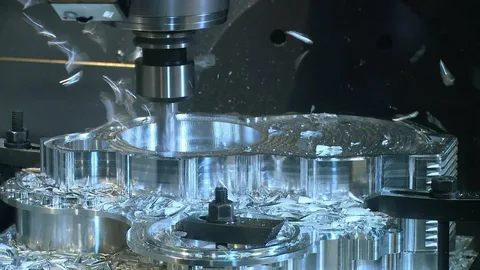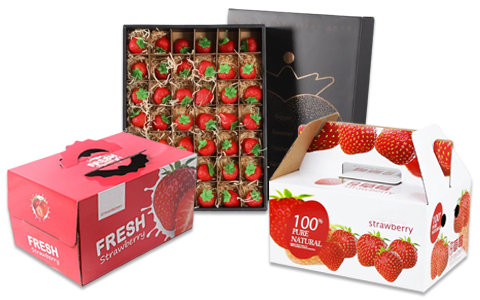CNC machining, or Computer Numerical Control machining, has revolutionized product design and prototyping by providing manufacturers with precise, versatile, and highly efficient methods of production. This technology involves the use of computerized systems to control machine tools, such as mills, lathes, routers, and grinders, to produce complex parts and prototypes with a high level of accuracy. Whether for small-scale custom designs or large production runs, CNC machining offers many advantages that enhance product design, development, and prototyping processes.
In product design and prototyping, it is essential to have quick iterations, high precision, and cost-effectiveness. CNC machining addresses these needs by offering flexibility in design adjustments, improved consistency, and the ability to work with a wide range of materials. As businesses demand faster time-to-market, CNC machining stands out as a critical tool for designers and engineers, enabling the realization of even the most complex designs with the utmost precision.
Accelerating the Prototyping Process
The process of product prototyping is an essential phase in the development of any product, as it helps identify design flaws and allows for testing of form, fit, and function. CNC machining has become the go-to solution for rapid prototyping due to its speed and accuracy. Traditional methods, such as handcrafting or even some 3D printing techniques, might take longer to achieve the necessary precision. CNC machining, on the other hand, allows for the rapid creation of prototypes that are almost identical to the final product.
The automation provided by CNC machining enables engineers to quickly implement changes to the design without requiring a complete overhaul of the prototype. If a design tweak is needed, the machine can adjust parameters based on the latest design files. This flexibility drastically reduces the time required to finalize prototypes, leading to faster feedback loops, which ultimately shortens the development cycle. The use of CNC machines ensures that the prototype’s quality is maintained throughout the process, minimizing the need for costly revisions and rework.
Precision and Accuracy in Product Design
One of the standout features of CNC machining is its unparalleled precision and accuracy. The process is entirely computer-controlled, meaning human error is significantly reduced. This level of precision is particularly crucial in industries where even the smallest deviation can lead to subpar product performance or safety concerns. For example, industries such as aerospace, automotive, and medical device manufacturing rely on CNC machining to create parts that must adhere to strict tolerances and standards.
CNC machining not only ensures accuracy in dimensions but also in surface finishes and part alignment. Designers can work with a high degree of confidence, knowing that their designs will be realized exactly as intended. This capability to produce detailed features, intricate shapes, and exact specifications with minimal deviation significantly enhances the product design process. Designers can also test the functionality of these features in prototypes before moving to full-scale production, ensuring a smooth transition from concept to reality.
Material Versatility in CNC Machining
CNC machining offers unmatched versatility in the choice of materials it can process. From metals like aluminum, steel, and titanium to plastics, composites, and even wood, CNC machining accommodates a wide variety of materials, each with unique properties and applications. This flexibility allows designers to choose the best material for their specific project needs, whether they prioritize strength, weight, heat resistance, or other characteristics.
The ability to machine complex materials with high precision further enhances product design. For instance, CNC machines can work with materials that are difficult to process using traditional methods, such as high-performance alloys and composites. This capability not only widens the range of product designs that can be realized but also enables the development of more advanced and specialized prototypes. By experimenting with different materials, product designers can create optimized solutions that best meet the needs of their target market, leading to higher-quality products.
Cost-Effectiveness and Efficiency in Production
CNC machining has proven to be a cost-effective option, especially for small to medium-scale production runs. While initial machine setup and programming might involve a significant investment, the long-term savings are substantial. The high level of automation and reduced need for manual labor significantly lowers labor costs, and the precision of CNC machines minimizes material waste. This efficiency results in faster production times and lower overall production costs, making it an ideal solution for product designers and manufacturers.
Additionally, CNC machining enables batch production with consistent results, ensuring that each part produced meets the same quality standards. This consistency is crucial in industries where quality control is a top priority. For businesses looking to manufacture products at scale, CNC machining offers an optimal combination of low cost, high precision, and speed. It enables manufacturers to meet market demand without sacrificing quality or efficiency, contributing to overall business success.
Integration with Advanced CAD and CAM Software
Modern CNC machining is tightly integrated with advanced CAD (Computer-Aided Design) and CAM (Computer-Aided Manufacturing) software. This integration allows product designers to translate their digital models directly into machine-readable code that guides the CNC machine. CAD software enables designers to create intricate 3D models of their products, while CAM software optimizes the machining process by generating toolpaths that ensure the most efficient use of materials and machine time.
This seamless integration streamlines the entire design and production process, ensuring that every aspect of the product is considered before machining begins. The ability to simulate machining processes in virtual environments further enhances the design process, enabling designers to identify potential issues early on and make adjustments before production. As a result, CNC machining not only improves the accuracy of prototypes and final products but also fosters innovation by allowing designers to experiment with new and complex designs that were previously difficult to achieve.
Conclusion
CNC machining plays a vital role in enhancing product design and prototyping by offering speed, precision, and material versatility that are unmatched by traditional methods. Whether it’s accelerating the prototyping process, ensuring the accuracy of the final product, or improving cost-effectiveness, CNC machining is an indispensable tool for designers and engineers across various industries. Its integration with advanced software and automation further streamlines the product development process, enabling faster, more efficient production.
For businesses seeking to stay competitive, embracing CNC machining in the design and prototyping stages can significantly improve the development of innovative, high-quality products. As industries continue to demand higher precision, faster production times, and a wider range of materials, CNC machining will remain at the forefront of product development, facilitating the realization of even the most ambitious design concepts.



